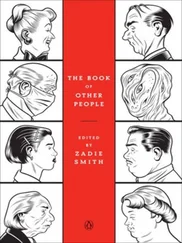THE BARNYARD BORDELLO
Puritan clergyman Cotton Mather left a rare account of an American buggery case. He wrote, ‘on June 6, 1662, at New Haven, there was a most unparallelled wretch, one Potter by name, about 60 years of age, executed for damnable Beastialities [sic]’. Potter, it seems, began sodomising animals at the age of 10 and never stopped. At the same time, he was a devout churchgoer noted for his piety and for being ‘zealous in reforming the sins of other people’. The man’s wife, Mather wrote, ‘had seen him confounding himself with a bitch ten years before; and he had excused himself as well as he could, but conjured her to keep it secret’. Potter then hanged the animal, presumably as an apology to his wife. Eventually, the law caught up with him, and he went to the gallows preceded by a cow, two heifers, three sheep and two sows. Watching his concubines die one by one, Potter was in tears by the time he approached the scaffold.
I’M NOT THAT KIND OF GIRL
In Vanvres, France, in 1750, Jacques Ferron was caught in the act of love with a she-ass and sentenced to hang. Normally, his partner would have died as well — but members of the community took an unprecedented step. They signed a petition that they had known the she-ass for four years, that she had always been well behaved at home and abroad and had never caused a scandal of any kind. She was, they concluded, ‘in all her habits of life a most honest creature’. As the result of this intervention, Ferron was hanged for sodomy, and the she-ass was acquitted.
JUVENILE DELINQUENTS?
The vast majority of prosecuted animals were pigs. In the Middle Ages they were frequently left unwatched, and they often harmed small children. Once arrested, they were usually placed in solitary confinement in the same jail with human criminals, registered as ‘so-and-so’s pig’, and publicly hanged with all the formality of a typical medieval execution. In the annals of animal crime, there are many famous pig cases. One of the most fully documented and most unusual occurred in Savigny, France, in 1457. A sow and her six piglets were accused of ‘willfully and feloniously’ murdering a five-year-old boy, Jean Martin. Found guilty, the sow was eventually hanged by its hind legs from the gallows. But the matter was not so simple: were the six piglets — who had been found stained with blood at the scene of the crime — also guilty? Their owner, Jean Bailly, was asked to post bail for them until a second trial and to take the accused back into his custody. Bailly said he didn’t have the money, and furthermore, refused to make any promises about the piglets’ future good behaviour. Three weeks later ‘the six little porklets’ went to court. Because of their youth and the lack of firm evidence of their guilt, the court was lenient. The piglets were given to a local noblewoman; Bailly did not have to pay, and the porklets could hold their heads high.
AN IMPORTANT RULING
A significant pig case occurred in 1846 in Pleternica, Slavonia — it was one of the first times an animal’s owner bore responsibility for damages. A pig ate the ears of a one-year-old girl and was given the usual death sentence. Its owner was sentenced to labour in order to provide a dowry for the earless girl, so that, despite her loss, she might someday find a husband.
MONKEYING AROUND
As recently as January 23, 1962, an animal was called into the court-room. Makao, a young cercopithecoid monkey, escaped from his master’s apartment in Paris and wandered into an empty studio nearby. He bit into a tube of lipstick, destroyed some expensive knick-knacks and ‘stole’ a box that was later recovered — empty. The victims of Makao’s pranks filed a complaint stating that the box had contained a valuable ring. The monkey’s owner contended before the judge that his pet could not possibly have opened such a box. Makao was ordered to appear in court, where he deftly opened a series of boxes. His defence ruined, Makao’s master was held liable for full damages.
A HAPPY TAIL
In 1877 in New York City, Mary Shea, a woman of Celtic origin, was bitten on the finger by Jimmy, an organ-grinder’s monkey. Mary demanded retribution, but the judge said he could not commit an animal. Miffed, Mary stormed out of the courtroom, snarling, ‘This is a nice country for justice!’ The monkey, who was dressed in a scarlet coat and velvet cap, showed his appreciation: he curled his tail around the gas fixture on the judge’s desk and tried to shake hands with him. The police blotter gave this record of the event: ‘ Name : Jimmy Dillio. Occupation : Monkey. Disposition : Discharged’.
HARD-BOILED CRIMINAL
One of the most celebrated animal trials was that of the rooster in Basel, Switzerland, which was accused in 1474 of laying an egg (without a yolk no less). It was a widely held belief that such eggs could be hatched by witches in league with Satan, giving birth to deadly winged snakes. The accused cock was in a tight spot, and even his defence attorney did not argue that the charges were false. He did argue that his client had no pact with the devil and that laying an egg was an unpremeditated and involuntary act. The judges were not impressed, and after a lengthy trial it was decided that the rooster was possessed by Satan. The bird and the egg were burned at the stake before a huge crowd. The subject was being debated more than 200 years later, in 1710, when a Frenchman presented a paper before the Academy of Sciences stating that yolkless eggs were merely the occasional products of an ailing hen.
WOMEN AND CHILDREN FIRST
In Stelvio, Italy, in 1519, field mice (referred to in a German account as Lutmäusse — they may have been moles) were accused of damaging crops by burrowing. They were granted a defence attorney, Hans Grienebner, so that they could ‘show cause for their conduct by pleading their exigencies and distress’. He claimed that his clients were helpful citizens who ate harmful insects and enriched the soil. The prosecutor, Schwartz Mining, argued that the damage they caused was preventing local tenants from paying their rents. The judge was merciful. Though he exiled the animals, he assured them of safe conduct ‘and an additional respite of 14 days to all those which are with young, and to such as are yet in their infancy’.
PUTTING THE BITE ON THE LANDLORD
In the 1700s, an order of Franciscan friars in Brazil was driven to despair by the termites which were devouring not only the food and furniture, but also the very walls of the monastery. The monks pleaded with the bishop for an act of excommunication, and an ecclesiastical trial was held. When the accused defiantly failed to appear in court, they were appointed a lawyer. He made the usual speech about how all God’s creatures deserved to eat, and he praised his clients’ industry, which he said was far greater than that of the friars. Further, he argued that the termites had occupied the land long before the monks. The lengthy trial overflowed with complicated legal speeches and much passionate quoting of authorities. In the end, it was decided that the monks should give the termites their own plot of land. The judge’s order was read aloud to the termite hills. According to a monk’s document dated January, 1713, the termites promptly came out of the hills and marched in columns to their new home. Woodn’t you know it?
A CAT-ASTROPHIC RULING
It was an ancient Breton belief that tomcats had to be killed before reaching the age of seven, or they would kill their masters. One morning a farmer of Pleyben was found dead in his bed, his throat slit. The local judge had already arrested two servants, when the herdsman noticed the household cat in front of the hearth. Proclaiming, ‘I for one know who the culprit is!’ the herdsman pulled the following stunt: he tied a string to the dead man’s wrist, ran the other end through a window, and gave it a tug from outside — thus ‘shaking’ the corpse’s arm. Right in front of the judge, the tomcat calmly approached his ‘revived’ master in order to finish him off properly. The guilty cat was burned alive.
Читать дальше












